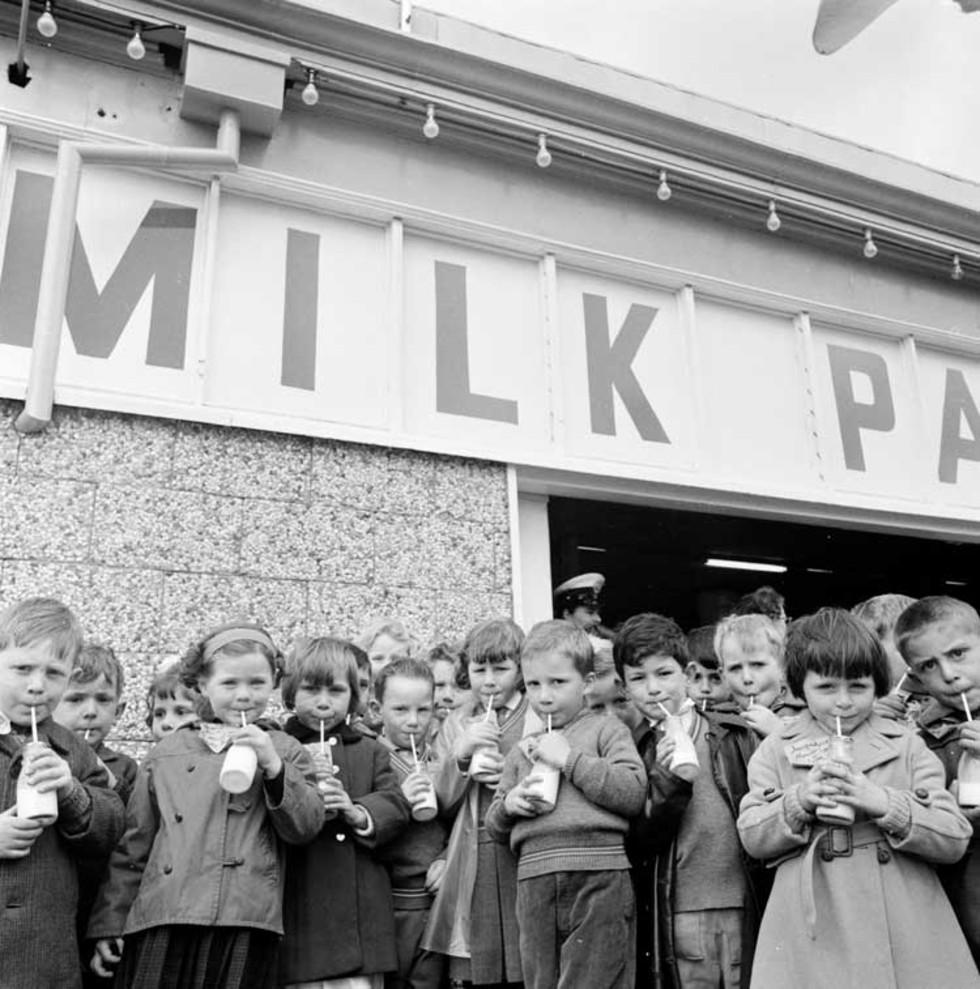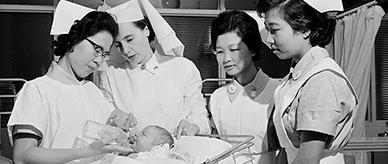


About this record
This is a 1969 black-and-white photograph of a crowd of schoolchildren drinking milk from small milk bottles. The children were probably on an excursion to a Melbourne milk depot.
Educational value
- Depicts children at a milk depot, which they were probably visiting to see where the milk that they drank every day at school at recess was processed – the free school milk program for children under the age of 13 was introduced as an Australian Government initiative in 1951, by Dr Earle Page, Minister for Health in the Menzies government; the idea originated in the United Kingdom in the 1920s and was adopted in Australia in the postwar era to improve children's nutrition; the program ended in 1973.
- Shows the glass bottles (one third of a pint, or 0.2 litres) supplied daily to all schoolchildren in Australia under the scheme – although the aluminium tops on the bottles made a very good seal, they were difficult to open, and teachers had to pierce the lids for the children.
- Portrays the children drinking pasteurised milk – Louis Pasteur invented pasteurisation in 1856, a process that kills pathogens in milk, especially tuberculosis and typhoid; before the 1950s, when state governments began to enforce pasteurisation, milk was not always pasteurised, nor was it always transported or stored in sterile refrigerated containers.
- Shows a milk depot, where milk was bottled – it was then collected by delivery vans and distributed to schools, where it frequently sat in the sun until recess.
- Displays milk bottles in a size based on imperial measurements – the year after this photograph was taken, Australia took the first steps to convert to the metric system; by 1975, the imperial measures of yards, inches, feet, miles, gallons, pints, ounces and degrees Fahrenheit had been officially abandoned in favour of the metric system.
Acknowledgments
Learning resource text © Education Services Australia Limited and the National Archives of Australia 2010.
Related themes
Need help with your research?
Learn how to interpret primary sources, use our collection and more.


